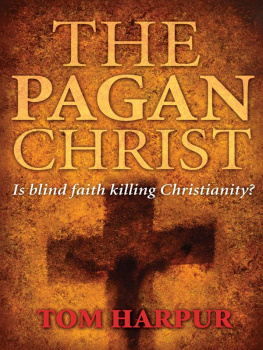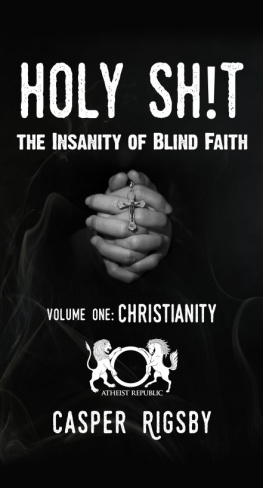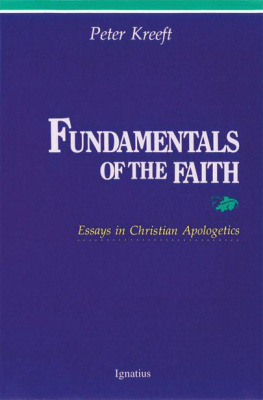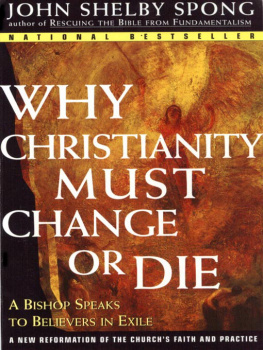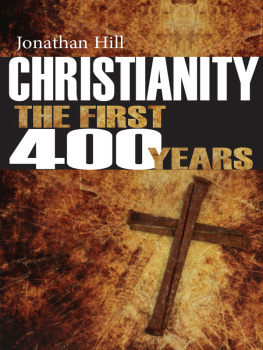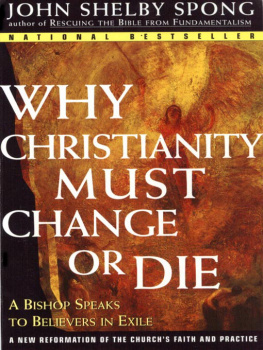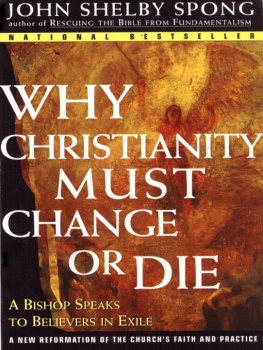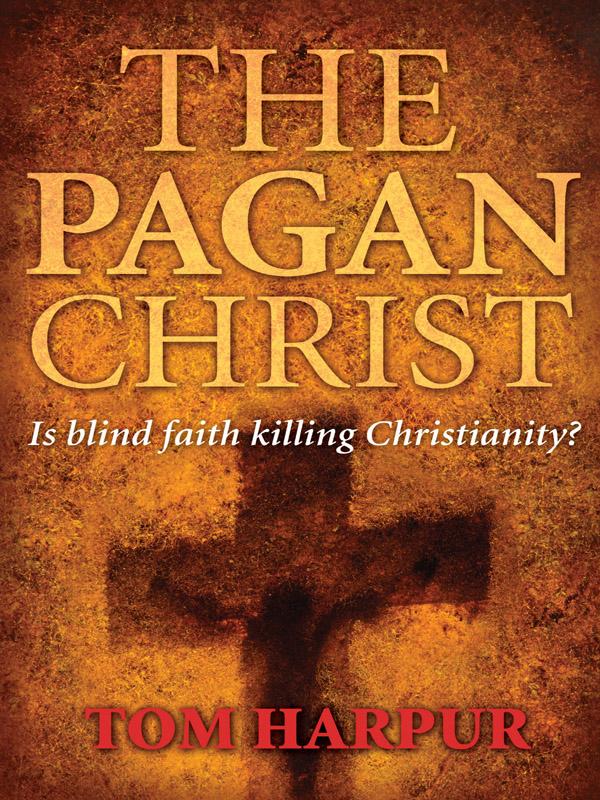
The Pagan Christ
ALSO BY TOM HARPUR
Harpurs Heaven and Hell
For Christs Sake
Always on Sunday
Life After Death
God Help Us
The Uncommon Touch
Would You Believe?
Prayer: The Hidden Fire
Finding the Still Point
TOM HARPUR
THE
PAGAN
CHRIST
Is Blind Faith
Killing Christianity?

First published in Australia and New Zealand in 2005
Copyright Tom Harpur 2004
All rights reserved. No part of this book may be reproduced or transmitted in any form or by any means, electronic or mechanical, including photocopying, recording or by any information storage and retrieval system, without prior permission in writing from the publisher. The Australian Copyright Act 1968 (the Act) allows a maximum of one chapter or 10 per cent of this book, whichever is the greater, to be photocopied by any educational institution for its educational purposes provided that the educational institution (or body that administers it) has given a remuneration notice to Copyright Agency Limited (CAL) under the Act.
Allen & Unwin
83 Alexander Street
Crows Next NSW 2065
Australia
Phone: (61 2) 8425 0100
Fax: (61 2) 9906 2218
Email: info@allenandunwin.com
Web: www.allenandunwin.com
National Library of Australia
Cataloguing-in-Publication entry:
Harpur, Tom.
The pagan Christ: is blind faith killing Christianity?
Bibliography.
Includes index.
ISBN 1 74114 596 1.
1. Fundamentalism. 2. Christianity and other religions. 3.
Paganism. I. Title.
270.82
Printed by Griffin Press, South Australia
10 9 8 7 6 5 4 3 2 1
To the memory of
Professor Alvin Boyd Kuhn, Ph.D. (18801963),
a man of immense learning and even greater courage
The very thing which is now called the Christian religion
existed among the ancients also, nor was it wanting from
the inception of the human race until the coming of Christ
in the flesh, at which point the true religion, which was
already in existence, began to be called Christian.
ST. AUGUSTINE, Retractiones
But we have this treasure in earthen vessels.
ST. PAUL, 2 CORINTHIANS 4:7
Do you not know that you are the temple of God,
and that the Spirit of God dwells in you?
1 CORINTHIANS 3:16
Though Christ a thousand times in Bethlehem be born,
But not within thyself, thy soul will be forlorn;
The cross on Golgotha thou lookest to in vain
Unless within thyself it be set up again.
ANGELUS SILESIUS (16241677)
Contents
4 The Greatest Cover-up of All Time: How a Spiritual
Christianity Became a Literalist Christianism
7 The BibleHistory or Myth?:
The End of Fundamentalism
8 Seeing the Gospels with New Eyes:
Sublime Myth Is Not Biography
Appendix A: Background on Three Experts on
Mythology, Religion, and Ancient Egypt
Appendix B: More Similarities between the
Egyptian Christ, Horus, and Jesus
Thousands of souls in the Pagan world were on fire with the pure flame
of divine passion of the Christly love centuries before Jesus ever lived.
ALVIN BOYD KUHN, A Rebirth for Christianity
Before we begin, there is something you must know about the title of this book: the word Pagan is almost totally misunderstood today. The deeply pejorative sense of the wordentirely the result of centuries of Christian prejudice and biasis illustrated at once by the Concise Oxford Dictionarys almost brusque definition: heathen, unenlightened or irreligious (person). But the citation goes on to admit that in its origin, the word was totally neutral. It comes from the Latin pagus, a country district. A Pagan, a paganus, initially was a peasant. The term was soon adopted by emerging Church authorities to denote all who were not orthodox Christians. As we shall see, the Pagans, who were persecuted, decried, killed, and ultimately utterly vanquished by the Church, held views of the Christ within that the Church was to plagiarize blatantlyand then cover up with book burnings, anathemas, and murder. Ironically, centuries later the Church was finally forced to turn to the Pagan Aristotle and his teacher, Plato, to save its theological bacon. The monumental work of St. Thomas Aquinaswhich is the foundation of Roman Catholic theology and is based upon the writings of Aristotle, including his whole theory of natural lawtestifies to that.
To the Canada Council: my sincere appreciation for the award and its support in the research and writing of this work.
Authors are often asked how long it takes them to write their books. The honest answer, in most cases, is what I would certainly say with regard to this one: a lifetime. The Pagan Christ flows from all I have experienced and read over that lengthy span. Consequently, I owe a huge debt to past teachers, friends, my many book and column readers over the years, and a host of other writers and thinkers far too numerous to name. In particular, though, I wish to thank the Reverend Larry Marshall, who first introduced me to the writings of Dr. Alvin Boyd Kuhn. When he originally sent me some samples of Kuhns writings, I did with them what I usually do with the avalanche of religious and spiritual material that would pour over the desk of anyone specializing in this field for a major world-class newspaperI put them to one side. Thankfully, however, he remained persistent. He sent more manuscripts and kept asking how I liked what had already come. At last, like the wearied judge in the Gospel parable of the woman who wouldnt take no for an answer in her quest for justice, I relented and undertook to read some of it as a way out. It was a startling revelation beyond anything I had imagined possible, a key turning point on my spiritual path. Reading at first in sheer disbelief, and then more and more seeing the radical truth of what was being so learnedly and powerfully set out before my eyes, I began to devour Kuhns writings and then those of his two major sources, especially the Egyptologist, poet, and social reformer Gerald Massey. Marshall was a constant resource, encourager, and friend throughout the research and writing of The Pagan Christ. He read the second rough draft and made many helpful suggestions. I cannot thank him enough. Thanks as well are owed to Bill Denyar for his reading and gentle criticism of the initial draft.
Patrick Crean, the publisher at Thomas Allen, showed his warm enthusiasm for this project from the outset. A vote of thanks go to him for his courage and his overall wise counsel, especially in the final stages. To my editor, Jim Gifford, special gratitude is due for his thoroughness, his tough love approach to the text, and his quiet but steady pressure on me to make my own voice heard above the essential chorus of the major ancient and modern sources. Thanks too belong to Alyssa Stuart, the senior publicist at Thomas Allen, and to the rest of the support staff there.
Finally, my wife, Susan. There is no adequate way to express what she has meant to me in the creating and completing of The Pagan Christ. Her technical and editorial skills, honed by twenty-eight years of work at the Toronto Star, were an incredible and continuous asset to one who is quite honestly a technomoron, a word the novelist Robertson Davies once used to describe himself to me in an interview. Susan played a crucial role at every stage, but her contribution really goes far beyond that. Ill say no more. She knows, and thats enough for me.
Next page
